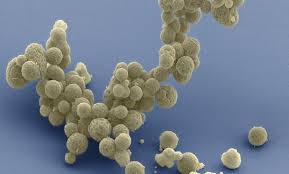
Breaking News
 Ukraine War: Negotiate, Don't Escalate and Risk WWIII
Ukraine War: Negotiate, Don't Escalate and Risk WWIII
 Why Ask The State To Fix What It Broke?
Why Ask The State To Fix What It Broke?
 Amazon in discussions with USPS about future relationship
Amazon in discussions with USPS about future relationship
 CIA Whistleblower just revealed the CIA's real plan for Venezuela and it's a DISASTER
CIA Whistleblower just revealed the CIA's real plan for Venezuela and it's a DISASTER
Top Tech News
 Build a Greenhouse HEATER that Lasts 10-15 DAYS!
Build a Greenhouse HEATER that Lasts 10-15 DAYS!
 Look at the genius idea he came up with using this tank that nobody wanted
Look at the genius idea he came up with using this tank that nobody wanted
 Latest Comet 3I Atlas Anomolies Like the Impossible 600,000 Mile Long Sunward Tail
Latest Comet 3I Atlas Anomolies Like the Impossible 600,000 Mile Long Sunward Tail
 Tesla Just Opened Its Biggest Supercharger Station Ever--And It's Powered By Solar And Batteries
Tesla Just Opened Its Biggest Supercharger Station Ever--And It's Powered By Solar And Batteries
 Your body already knows how to regrow limbs. We just haven't figured out how to turn it on yet.
Your body already knows how to regrow limbs. We just haven't figured out how to turn it on yet.
 We've wiretapped the gut-brain hotline to decode signals driving disease
We've wiretapped the gut-brain hotline to decode signals driving disease
 3D-printable concrete alternative hardens in three days, not four weeks
3D-printable concrete alternative hardens in three days, not four weeks
 Could satellite-beaming planes and airships make SpaceX's Starlink obsolete?
Could satellite-beaming planes and airships make SpaceX's Starlink obsolete?
Scientists Just Achieved a Major Milestone in Creating Synthetic Life

The researchers, led by a team from Macquarie University in Australia, chose yeast as a way to demonstrate the potential for producing foodstuffs that could survive the rigors of a changing climate or widespread disease.
It's the first time a synthetic eukaryotic genome has been constructed in full, following on from successes with simpler bacteria organisms. It's a proof-of-concept for how more complex organisms, like food crops, could be synthesized by scientists.

Scientists manipulated SynXVI to get yeast growing at elevated temperatures. (Goold et al., Nature Communications, 2025)

 First totally synthetic human brain model has been realized
First totally synthetic human brain model has been realized Mach-23 potato gun to shoot satellites into space
Mach-23 potato gun to shoot satellites into space

